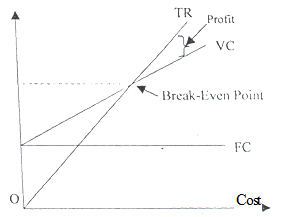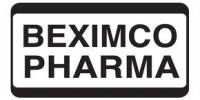Brief Description of Various Departments of BSB
3.1 Introduction:
Bangladesh Shilpa Bank (BSB) as a development financing institution (DFI) provides various function s to make an effective contribution towards the process of expansion of industrialization of the country. It has emphasized on the long term lending to the viable new projects having comparative advantages, export prospects, forward, and backward linkage and local technology as well as raw material based projects. To perform efficient and effectively, BSB in its board meeting has determined the schedule of activities of various departments and zonal offices and they are supposed to perform the tasks accordingly and the respective employee has to report according to organizational hierarchy.
BSB operates its activities through 21 departments out of them; we inspected eight departments and tried to find out their details operations. These eight departments are as follows:
1. Loan Operation Department (TOD)
2 Documentation and Machinery Procurement Department
3. Project Implementation Department (PID)
4. Central recovery department (CRD)
5. Central Accounts Departments (CAD)
6. Project Rehabilitation Department (PRD)
7. Law Department
8. Human Resource Department
The main responsibilities and prime activities of these departments are mentioned below in details-
3.2 Loan Operation Department (LOD):
LOD is the starting department of sanctioning loan to the sponsors and in this department various analysis are made for making decision whether the proposed projects are viable or not Anyone who wants loan from BSB, at first, he has to fulfill a questionnaire, these Processes are as follows:
• At first an application form is supply to the entrepreneur.
• After filling up to the application form it is submitted by the entrepreneur.
• The entrepreneur supplies a project appraisal letter.
• After analyzing the project appraisal, the board decides the loan should be Sanctioned not.
3.2.1 Functions of Loan Operation Department:
1. At first application form is supplied to the entrepreneur, after filling up the application form, the entrepreneur supplies a project appraisal letter. Project appraisal letter includes:
– Name the project Location
– Types of the project
– Promoters
– Historical data and information of the project.
2. To give advice to the entrepreneur about industrial investment and to give loan. They like to appraise the propose project from various aspects: Management and organizational appraisal, technical appraisal, marketing appraisal, economic appraisal, and financial appraisal.
3. To evaluate project loan proposal, this department sent the proposal to the loan the sanction committee to sanction the loan and getting approval from respective authority and take recommendation from them;
4. To take clearance from privatization board for proposed, if necessary
5. To take necessary action to process and approve co-financing project; Loan sanction letter sent to subsequent department;
6. To take necessary action to implement the project; Re-evaluate the project on the basis of first evaluated loan agreement, if necessary, according to the updated information;
7. To evaluate the proposal of underwriting of shares as a member of ICB consortium;
8. To issue gazette notification about loan procedure on behalf of the government;
9. To sanction feasibility report of a loan project and sanction letter and memorandum
etc.
10. To examine and appraise the joint venture proposal of Bangladeshi and foreign
investors;
11. To advice about the preparation of loan application form for the non-resident people of
Bangladesh;
12. To encourage foreign lease-financing organization who provides equipment and new technology to set up business in out company;
13. To give advice about the advantage of loan;
14. To take respective steps about various governmental bodies approval to sanction of non-resident Bangladeshis loan proposal
15. To evaluate and give opinion about zonal office sanctioning loan and their activities;
16. Computerization of loan management activities;
3.3 Documentation and machinery Department activities:
To prepare the schedule of machinery and approve for tender;
To assist the promoters to invite tender and other formalities; ” To give necessary advice to investor’s /entrepreneur about tender invitation;” To evaluate the offered machinery and related documents and to give necessary information collected about the supplier;
To analyze the tender price, quality of machinery among the bidders and taking approval from the authority;
To prepare the list of pre-shipping investigator though notice and receive approval
Arranging investigation procedure of importable machinery;
To make the rules the procedures of machinery procurement and co-ordinate the activities of branch and zonal offices;
To collect information about the different prices of different machineries of different capacities in industrial production;
To give opinion about technical aspects of loan operation department and branch;
To give recommendation about the various projects regulated by loan department and zonal office;
Documentation of collateral and bank guarantee on behalf of directors;
3.3.1 Functions of Documentation Department:
Documentation and contract completion with loan recover after loan sanction,
Documentation given to bank by the company,
Site conformation about project according to document:
Examination of project memorandum and statements of affairs;
Renewal of necessary documents in time;
Conformation of Bank guarantee;
Accidental investigation of document kept in register strong room;
To collect actual document from register and act as custodian for that document and Other activities given by department head;
3.4 Project Implementation:
• When the loan is sanctioned and forwarded to document and Machinery Procurement department then the activities of project implementation ids started. This department helps to begin operation of estimated activates. Here, mainly to import the machinery installation, collection of raw material, hiring of experts training of employee for becoming experienced etc. are performed by the BSB in respect of sponsors for smoothing movement of the projects. Besides others are as follows:
1. To take necessary action to implement the project after sanctioning the loan for the project;
2. Taking necessary action to make the factory layout plan;
3. Making necessary adjustment in case of any change in the project plan;
4. To take steps to disburse sanctioned loan step by step according to the loan conditions;
5. To give necessary assistance in case of bridge finance;
6. To take action to implement the project construction timely according to construction time table;
7. Monitoring the machinery of the project, inspection and tacking any kind of action regarding to any machine related problem from the machinery department;
8. Re-adjusting the cost at the project completion stage and re-exarnining excess loan application and processing of loan application and sanctioning;
9. To ensure the project’s raw materials procurement policy and maintaining working capital according to the loan policy;
10. Inspection and maintaining experimental production and extension of loan period;
11. Making the final construction report (FCR) and transferring it to the Central Recovery Department (CRD) and to the concerned departments well;
12. Determination of construction period, Schedule preparation of loan repayment and taking necessary action regarding this;
13. Monitoring and inspecting the project to see whether the project is implementing according to time schedule;
14. To arrange insurance scheme against risk of assets of implementation of the project;
15. Time to time verification of latest rules and regulation about project completion and appropriate rule preparation;
16. To recover at least two installments from the borrower after preparation of final construction report and latter sent the file and document to the central recovery department from project implementation department;
17. Sending file to law department to take legal action of the loan recover who are unable to repay 2 (two) installments of a loan after reminding;
18. Conversion of the foreign currency into local currency if necessary;
19. Re-evaluation of loan agreement after sanction, if necessary;
20. Updating the sanction according to the necessity of the foreign lender;
21. Re-scheduling the construction period and taking authorization from the concern authority as well as taking necessary action relating to this;
22. Completion of duties given by supreme authority or departmental chief;
3.5 Central Recovery Department:
This department is engaged in collecting of loan amount with interest though there are some sorts of rescheduled and repayment facilities. Normally the collection of money in installment is having 6 or 4 months and these departments inspect the projects condition whether there is any leakage.
If the borrower fails to repay the loan, it is rescheduled and sometimes interest is exempted to the sponsor for surviving the project.
Sometimes they justify that for various reasons loan amount would not be paid, because of a variety of reasons such as:
- With the passes of time;
- Due to the change in fashion of human beings;
- Due to the change in demand in consumer;
- Strong competition among the same type of companies;
- Due to change in technology;
The bank always try to survive the projects but if the authority thinks that the reasons are the willing fault of the sponsor then it is transferred to the Law Department to take legal action. Sometimes, the project is transferred to Project Rehabilitation Department to restore the project.
3.6 Central Accounts Department:
This department is usually involved in accounting of whole of the BSB. The central accounts department of BSB helps in the preparation of Balance Sheet. This Department keeps records of Payroll, day to day expenditure, Staff Loan, Employee Provident Fund, Pension Fund etc.
3.6.1 Functions of Central Accounts Department;
Maintenance of accounts and keeping all banks records centrally.
Preparation and finalization of yearly bank accounts and taking approval in the annual general meeting.
Annual income and Expenditure of bank loan program and preparation of budget for maintenance and taking approval from Bangladesh Government.
Cash Fund of Bank/Management of Fund;
Collection of local fund of Bank, preserving and preparing the maintenance and confirmation of the investment.
Preparation of check for approved the loan and sent to related subdivision after audit.
Transaction with Bangladesh Bank and interrelated Banks and records of related accounts. Investment and maintenance for general provident fund and fund for aged person, preservation and preparation of respective accounts, to prepare the annual accounts and finalization and approval from board of directors or committee , Fixation of Income Tax for income tax payee officers/staffs; Payments and preservation of respective accounts.
Proper implementation of Government approved exchange fluctuation burden absorption scheme (EFAS) of 1990;
Finalization of annual bank accounts;
Prepare and distribute all kinds of accounts, rules and regulation of the bank;
To maintain properly the accounts, investment of benevolent Fund, and gratuity and doing the function of collection;
Maintaining the accounts of loan operations of Bangladesh Bank and Govt. regarding rigid and payments and arrangement of repayments and To send various weekly, monthly, quarterly, half-yearly, yearly and so required statement to Bangladesh Bank.
To give the appointment of Bank Tax advisor
To obey the Duty given by the Departmental Head time to time
3.7 Project Rehabilitation Department:
3.7.1Function of Project Rehabilitation Department (PRO):
1. This Dept. primarily selects a project, which become sick. PRD investigates the project and find out the reasons of sickness and forms rehabilitation committee to investigate the projects.
2. To take necessary action to rehabilitate the sick projects after appropriate investigation;
3. When there is no scope to rehabilitate a project, documents transferred to law department to take further steps;
4. To take necessary action about the production, marketing of the product and loan repayment of the project;
5. Managing and Directing and Recommendation about takeover the project;
6. To give confirmation about the projects profitability;
7. Duties give up to the third party or previous management after successful managing of the project;
8. To analysis and compare the production, marketing and recovery of the rehabilitated project and take appropriate action accordingly;
Rehabilitation Department is mainly deals with the sick industry after rehabilitation last 53 projects in 2000. BSB has made a crucial decision to monitor the project performance continuously by the other department and if these department find any symptoms they take initially measures considering the techniques used by the project rehabilitation Department as result this department does not take ^anymore sick projects and according to the personnel of this department, in near future this department will be obsolete
3.8 Law Department:
3.8.1 Functions of Law Department:
• Declaration of legal notices to the loan Defaulters and take legal action against the loan defaulters
| Sl no | Section | Activities |
| 1. | General administrative & policy department |
|
| 2 | Management section |
|
| 3 | Disciplinary section |
|
| 4 | Welfare section |
|
| 5 | Leave and medical section |
|
• Law suit against me loan defaulter and arranging the all necessary activities to final dismissal according to the bank ordinance;
• To take the case of the litigation by the bank and to file suit in the high court and Supreme
• Managing the cases that are filled by the loan-holder against bank with the help of
Lawyers;
• To invite auction to sale assets after receiving degree from the court and maintain relation with the courts and co-ordinate the activities;
• Managing case against advance defaulter and filling of the case against them and Preparation of banks special consultant/legal advisor and panel lawyers scheduled and making communication with them to supervise the law-suit and monitoring and coordinating their operation.;
• Recommendation to exchange existing law to the recovery of loan;
• To keep the interest of bank and provide legal advice.
3.9 Human Resources Management Department:
3.9.1 Functions of Human Resources Management Department:
” To control of administrative functions of Banks Human resources;
• To take different implementation program for he development of Human Resources;
• To give appointment, promotion and evaluation of officers staffs;
• Preparation of service Rules, correction, implement, administrative rules, sub-rules, notice etc. to control the officers/staffs;
• Proper implementation of labor law, co-operation with employees union, examines the demands, consultation, improvement of relation with administration;
• Sanction of house Building Advance, Bi-cycle Advance and confirmation of utilization;
• Fixation of service facilities and Payment before retirement of L.R.R.;
• Confirmation of Treatment facilities for the Officers/Staffs;
• Maintain all kinds of leave Accounts, Sanction Leave accounts, Sanction leave, except casual leave;
• Taking step and implementation for opening the new branch office;
• Arrangement of meeting of the chief of the branch and zonal offices;
• To communicate with the govt. & other organization about administrative affairs, and To take step for implementation of computer technology for controlling of bank human resources function.
-Provide scholarship policy;
– Assist the helpless personnel;
-Provide retirement benefit.
-Provide medical facility & allowance;
Sick Industries
4.1 Introduction:
Bangladesh Shilpa Bank undertakes various projects by providing finance, machinery and other aids, some projects re-implemented and successful and some projects are failed to attain the goal and these firms are called sick firm. Sick industry means the industries, which either become stuck-up during construction or could not operate successfully after implementation. These projects could neither pay back the banks dues nor make any contribution to the national economy. These projects were identified as sick industries in Bangladesh, which has no specific statistical data. Here the main objective is to identify the causes of sickness of these industries.
4.2 Causes of Sickness:
Bangladesh Shilpa Bank undertakes various projects by providing fiance, machinery and other aids, some projects are implemented and successful and some projects are failed to attain the goal and these firms are called sick firm. There are various reasons of sick firm. But to discuss it easily we classify it in two categories, they are-
1. The reasons that are beyond dies control of the project owner.
2. The reasons that are control of the project owner.
The above causes are further divided into six causes. The causes are discussed below according to their importance though all of the causes are important.
4.2.1 Financial Problems/Shortcoming of Working Capital:
The shortage of working capital is the most acute problem of majority of the sick industries. Working capital is required to finance purchase of required raw materials and other term needs of a project after it is implemented. A survey shows that 17% of the projects suffer due to shortage of capital. The problems, which lead an industry towards sick, are as follows-
- Loan application with insufficient amount of money that would not meet fixed and operation cost.
- Economic problem comes from the social cost benefit analysis.
- Higher fixed cost i.e., increases fixed cost as result of increasing of the price of machinery, land, or any other fixed items.
- Measurement of investment outlay and cost of the project are not appropriate.
- When the means of financing is not available.
- When the project is not profitable.
- When the Production is not reached at the break-even point.
- When they cannot calculate appropriate risk level of sick.
- Cash flow of the project is not available.
- If actual cost of the project is more than the budgeted cost. Shortage of working capital
- Lack of operating capital.
- When variable cost is increasing.
- Does not ensure sufficient mortgage.
- Improper inspection of Bank financed project.
- Insufficient insurance facility.
- If market interest reat4e increase, cost of working capital will increase as a result the project may become in sick.
4.2.2 Technological Problems:
Machinery imbalance causing lower capacity utilization is the major technical problem of many projects. Some are also suffered for faulty technical design. A survey reveals that 13% of the projects are suffered due to technological problems. Which lead industries towards sick are as follows: –
• Whether the preliminary test and studies are not appropriate;
• Availability of raw materials, powers and other infrastructures facilities has not been established;
• The selected scale of operation is not optimal;
• The production process chosen is not suitable;
The equipment and machine chosen are not appropriate;
Lack of modem technology, like incapable to use the computer and modem machinery;
If the selection of machinery becomes faulty, it will not ensure the achievement of objectives;
Wrong or improper selection of the machinery;
Lower capacity of the machine resulting price will be higher i.e., production ,cost high, inconsistency between the origin of raw materials and the factory location, production of products and final consumption adversely affect the business;
Lack of communication system;
Lack of infrastructure facility;
Unavailability of gas supply, electricity etc.;
Selection of old and backdated technologies to be used in production;
Delay of supply of machinery procurement & rapidly change in technological environment.
4.2.3 Administrative and managerial problems:
There are also some internal conflict between the worker and manager. A survey reveals that 22% of the projects are suffered due to administrative and managerial problem. The administrative problems, which lead an industry towards sick, are as follows:-
• Success of the firm largely depends on management. When the management is not capable to manage all the managerial aspect, management should have proper planning, organizing, controlling, administrating, and monitoring;
” Weak management of the projects;
• Lack of efficiency of employment as well as management;
• Conflict and also death of management partner’s;
• Death of main entrepreneur of the project;
• Insufficient appointment of employee;
• Unskilled human resources;
4.2.4 Economic Problems:
The economic problems, which lead an industry towards sick, are as follows:-• Economic problem comes from the special cost benefit analysis; ” It does not impact on the distribution of the income in the society as well as the level savings and investments.
4.2.5 Political Problems:
The political problems, which lead an industry towards sick, are as follows:-
• Political pressure;
• Political instability, which adversely affect the production.
” Insufficient facilities provided by the govt. to industrialist like tax rebate etc.
• Political problem like worker unrest, strike etc.
4.2.6 Other reasons of Sickness:
Except the above problems there are also some other problems, which leads an industry towards sick. A survey reveals that 10% of the projects are suffered due to other problems, which are as follow:-
• Selection of in-appropriate industrial unit which is not financial and logically viable in concerned county;
• Delay of loan application;
• Internal delay of industries construction after loan sanction;
• If a portion of loan amount used for personal use;
4.3.1 Sick Situations:
Normally, BSB provides the long-term credit needs for implementation of the projects. BSB also provides working capital to its financed projects only to a limited -scale. While sanctioning loan by BSB, provision is made for commercial banks to provide 70% of the working capital needs But in most cases, it is found that the project management either can’t all raise the required working capital from the commercial banks, or they can’t raise required amount in due time. As a result these projects could not go into operation on schedule time and they were unable to pay the interest and the principal amount; at last they treat as a sick industry.
4.3.2 The Symptoms of sick Industries:
The symptoms of a sick industry are as follows:
- The initiator is unable to pay sufficient money at the implementation stage.
- The initiator is unable to pay sufficient money at the implementation stage
- The delay of implementation increases the project cost. It also creates many
- Problems and the burden of loan interest are also increased.
- The initiator is unable to pay the loan installment and other liability.
- Increase the tendency of undertaking unfair means in preparing the papers of stock materials.
- If profit from investment is decreasing gradually.
- If the project faces loss gradually.
- If the production level decreases considerably.
- To take loan from various sources at a high rate.
- Applied for a large amount of additional loan.
- Non-cooperation tendency with the loan providing bankers.
- Lacking of perfection in the market.
- Delay of operation start;
- Over estimation of mortgage value;
- Delay of documentation formalities in respect of loan;
- Causing of rehabilitation measure;
- Insufficient infrastructure facilities;
- Natural disaster that hampered production;
- Terrorism that hampered to establish an industry;
- And Delay of implementation.
4.3.3 Methods used by BSB to identify a sick industry:
There are some specific criteria to identify a sick industry. Two types of factors can be
considered to identify the sick industries. They are-
a) On the basis of Cost- Benefit Analysis:
For identifying a sick industries the following criteria may be consider by cost benefit analysis. If the cost of the project is more than the benefit then the industries is to be consider as sick industries. Sometimes industries can not recover the cost of the labor material, for this reason the industries goes into loss.
b) On the basis of Break even Analysis:

An industry should produce up to break-even point due to recover the fixed cost or
overhead cost. If they can’t recover fixed cost then this industry can be considered as a
sick industry.
c) On the basis of Financial Problems/Shortage of Capital:
The shortage of working capital is the most acute problem for majority of the sick industries. Working capital is required to finance purchase of required raw materials and other short term needs of a project after it is implemented. A survey shows that 28% of the projects suffer due to shortage of capital. The problems, which lead an industry toward sick, arc as follows-
- Measurement of investment outlay and cost of the project are not appropriate
- When the project is not profitable
- When the production is not reached at the break-even point
- Loan application with insufficient amount of money that would not meet fixed and operation cost
- Cash flow of the project is not available
- If actual cost of the project is more than the budgeted cost
- Shortage of working capital, i.e. if they do not manage the sufficient working Capital
- If interest rate increases the cost of working capital then the project may become sick
- Lack of adequate operating capital
- Higher fixed cost, i.e. increase the fixed cost as a result of increasing of the price, of machinery, land or other fixed items
- When variable cost increases
- When there is no sufficient mortgage
- Improper inspection of bank financed project
- Insufficient insurance facility
- Economic problem comes from the social cost benefit analysis
4.3.4 Sick Industries:
The sick industries concept is not he newest one in Bangladesh. It has been occurring from the pre-independence of Bangladesh and inherent some sick industries from its birth. After independence this is also continuing. The exact figure of sick industries is not identified. According to the statistics of a report of Project Rehabilitation Department, 274 sick projects were given loan before 80s and that time, the Govt Wanted balanced industrialization. Consequently, SBS has to give loan to many poor projects and most of the entrepreneurs did not have enough experience about the business and product demand. Moreover, most of the projects location did not have infrastructure facilities. As the entrepreneurs did not have enough experience about the industry and to have appropriate machineries, they has information asymmetry as a result, many of the above identified sick projects used inappropriate machineries, which afterwards became sick. Projects of Food and allied has a great shortage of working capital which caused them to be sick. During 80s most of the textile industries were based on synthetic but later on demand of synthetic was empty because consumer rushed to cotton products. So to rehabilitate them BSB helped them to convert into cotton textile as a result they have successfully continued their operation but the others, which could not convert them, BSB liquidated them. So, there were a number of reasons to be sick. I have tried to classify these projects into five different categories and to prepare this; I took the help to personnel of the project Rehabilitation Department
Causes of Sicknessin a Chart:
| SI no. |
Sector
Total no of projects
Problems
Technical
Management
Marketing
Working Capital
Others
1
Food & allied
71
15
14
13
24
17
2
Textile
61
11
9
30
6
7
3
Metal Products
17
3
5
2
13
0
4
Jute
19
4
3
1
6
1
5
Engineering
14
1
5
0
0
11
6
Paper Printing
11
5
3
0
3
0
7
Service
13
1
5
2
0
1
8Electrical
10
3
3
1
2
0
9
Petroleum
11
0
11
5
2
0
10
Non-metallic
9
2
0
0
1
2
11
Chemicals
9
1
1
1
2
0
12
Pharmaceuticals
10
2
0
0
0
1
13
Tannery
13
0
0
1
5
0
14
Transport
6
0
0
0
0
6
Total:
274
48
59
56
64
46
Percentage:
100%
18%
22%
20%
23%
17%
From the above classification we could observe that major problems like management, marketing and working capital caused the project to be sick and the percentage were approximately 22%, 20% and 23% accordingly. Around 71 and 61 projects of Food & Allied and textile were become sick projects respectively and the reasons behind this discussed in the above.
In 2008, BSB has rehabilitated 53 projects, which were given loan before 1998s. I discussed the reasons behind sickness of this projects and I have found that as there were influence of pressure groups to sanction a loan before and after getting the loan most of the borrower diverted their money into another asset as a result, the projects became sick. Again, for lack of adequate experience and efficiencies most of he entrepreneurs of textile sector failed to succeed and around 23 projects were liquidated and BSB recovered their principal money and remaining 30 projects file was sent to he Law Department.
4.4 Precautions about the sick Industries:
In the period of stagnation or in abnormal period some firms fail to continue and become as sick industry but if the rate of sickness is devastating then it becomes a matter of fact. So before providing loan importance must be given on the evaluation of future growth of the sector. If the evaluation procedure is correct, sick industry situation may avoid quite easily. So at pre-investment stage the following things must be considered:
1. To examine the project appropriately.
2. To calculate the project cost in a proper way.
3. To identified whether the proper place is selected.
4. Proper observation must be given at the time procurement of machineries.
5. Ensure that skilled and experienced personnel are easily found.
6. Proper steps are taken to protect uneven breakdown of electricity.
7. Ensure mat proper people are involved in managing the committee.
8. Ensure the financial capability of the initiator.
9. Ensure the procedure of makeup the preliminary cost and the doubtful loss.
10. Ensure the quality of the produced product.
11. Ensure the proper way to marketing the produced product.
12. Considering the change of test of customer and analysis the changes of customer behavior
13. Proper plan is taken to implement the project.
14. Steps are taken to avoid the potential conflict.
4.5 Impact of Sick industries on BSB and County as a whole:
• Increase of non-performing assets in organizational level as well as national level;
• Decrease in productivity at national level; ” Decrease the contribution in GDP and GNP;” Average effect in banks profitability;
• Increases the classified loan;
• Increase the lending rate of interest, which adversely affects the new and regular borrowers;
• Affects adversely in the economic growth rate of the county;
















